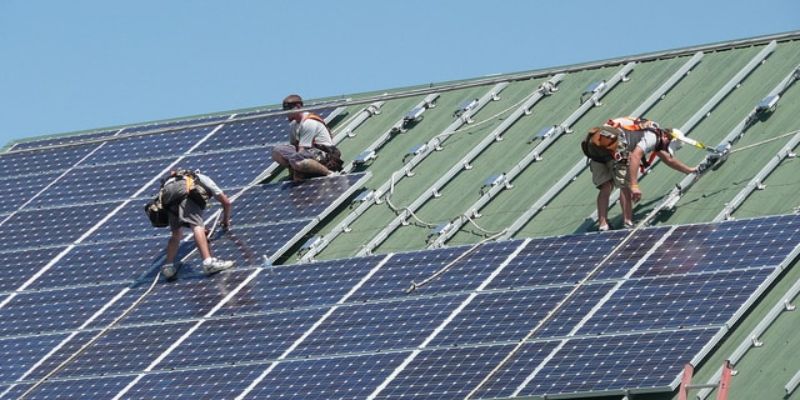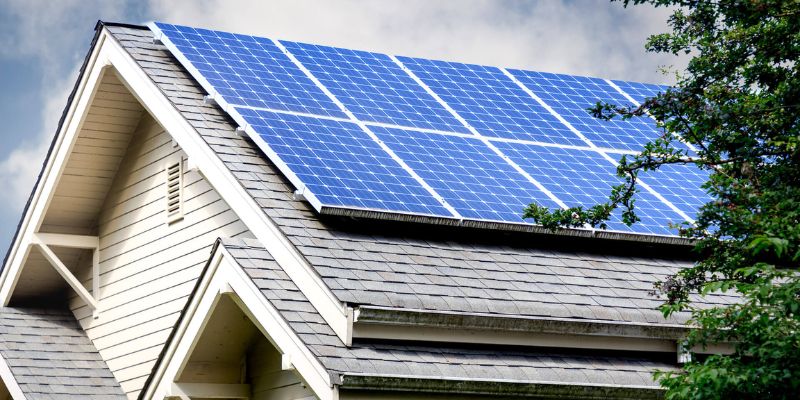How Much Energy Solar Panels Produce
Dec 31, 2023 By Susan Kelly
Are you considering having solar panels installed on your property? Solar energy is a powerful renewable source of electricity and in recent years more homes have used it to reduce their energy costs.
But how much power do individual solar panels produce and what differences can be observed throughout the year based on seasonal changes?
In this blog post we will explore these topics further by examining different scenarios to provide an overview of the potential benefits of investing in solar energy.
How Does a Solar Panel Produce Energy
Solar panels produce energy through a process known as the photovoltaic effect.
Here's a step-by-step explanation of how it works:
Sunlight
Solar panels are made up of individual solar cells, which are primarily composed of silicon. When sunlight hits the solar panel it consists of tiny particles of energy called photons.
Absorption
The photons from the sunlight are absorbed by the solar panel's material, usually silicon. The silicon atoms in the solar cells have negatively charged electrons in their outer orbits. Photons that strike the solar panel transfer their energy to these electrons.
Electron Excitation
The energy from the photons causes the electrons in the silicon atoms to become excited and break free from their atoms. This creates free electrons and positively charged "holes" in the silicon material.
Electric Field
The silicon material is specially treated to create an electric field within the solar cell. This electric field acts as a oneway street for electrons allowing them to move in a specific direction.
Electron Flow
The electric field pushes the free electrons toward the front surface of the solar cell. They create a flow of electrons or an electric current as they move.
Conductors
Metal contacts are placed on the front and back surfaces of the solar cell to collect the electric current. These metal conductors are connected to wires that transfer the electricity to an external circuit.
Power Generation
The flow of electrons through the external circuit creates electricity that can be used to power devices or be stored in batteries for later use. The electrical energy generated by solar panels can power homes, businesses or be fed into the grid for wider distribution.
It's important to note that solar panels require direct sunlight to produce the maximum electricity. The amount of energy produced depends on various factors, such as the intensity of sunlight, the angle of the solar panels, and any potential shading or obstructions that may reduce sunlight exposure.
Key Solar Panel Terms: kW, kWh, DC, and AC

Understanding the key terms of solar panels is essential for discussing their capacity and energy production.
Here's an explanation of the terms kW, kWh, DC, and AC in the context of solar panels:
kW (Kilowatt)
A kilowatt is a unit of power. It represents the rate at which energy is generated or consumed. In the context of solar panels, it refers to the capacity or size of a solar system. For example, a 5 kW solar panel system can produce or consume 5 kilowatts of power.
kWh (Kilowatt-hour)
Kilowatt-hour is a unit of energy. It represents the total amount of electricity consumed or generated over a specific period. It is commonly used to measure electricity bills. For example, if a solar panel system produces 10 kWh of electricity daily, it generates 10 kilowatt-hours of energy.
DC (Direct Current)
Solar panels produce electricity in the form of direct current (DC). In a DC system, the electric current flows in one direction, from the solar panels to the load or battery. The electrons flow continuously in a single path.
AC (Alternating Current)
AC refers to alternating current, the standard form of electricity used in homes and businesses. AC power alternates its direction of flow periodically. Most electrical appliances and the power grid operate on AC.
For usage in ordinary electrical systems, the DC electricity generated by solar panels needs to be converted into AC. This conversion is normally carried out by an inverter, which transforms DC electricity from solar panels into AC electricity.
How Much Energy Does A Solar Panel Produce

.
Here are some key factors that determine the energy production of a solar panel:
Solar panel capacity
The capacity of a solar panel is typically measured in kilowatts (kW) or watts (W). It indicates the maximum power output the panel can generate under ideal conditions. A higher-capacity solar panel can produce more energy.
Sunlight intensity
The amount of sunlight a solar panel receives directly affects its energy production. Regions with high solar irradiance, such as sunny and unobstructed areas, will generate more energy than regions with lower solar irradiance.
Panel orientation and tilt
The angle and direction in which the solar panel is installed play a role in energy production. Panels facing south (in the northern hemisphere) or north (in the southern hemisphere) tend to capture more sunlight throughout the day. The optimal tilt angle varies depending on the latitude of the installation location.
Efficiency
Efficiency in solar panels relates to how well the panel turns sunlight into power. In comparison to lower-efficiency panels, higher-efficiency panels may produce more energy from the same quantity of sunshine.
Shading and obstructions
Any shading or obstructions, such as nearby buildings, trees, or debris, can reduce the amount of sunlight reaching the solar panels, impacting their energy production.
Seasonal variations
The amount of energy produced by solar panels can vary throughout the year due to changes in sunlight duration, angle, and weather conditions. Typically, solar panels produce more energy during the sunnier months and less during winter or cloudy periods.
It's important to note that the energy production of a solar panel is often expressed in kilowatt-hours (kWh), which represents the total energy output over a specific period, such as a day, month, or year.
The actual energy production of a solar panel system can be estimated by considering the factors mentioned above and consulting solar performance models or using online solar calculators specific to your location and system details.
FAQs
How much electricity can 1 solar panel produce?
One solar panel's capacity to generate power varies according to its size, kind, and exposure to sunlight. Under ideal circumstances, the typical domestic solar panel generates about 320 watts per hour.
How many solar panels do I need for 1000 kWh per month?
The amount of solar panels you need to generate 1000 kWh per month depends on the size and type of panel, the angle and orientation of installation, and the average sunlight in your location. Generally, a 3-kilowatt system (12 solar panels) can produce around 1250 kWh per year in ideal conditions.
What size is a 1 kW solar panel?
A 1 kW solar panel system typically consists of 4-6 solar panels, depending on the size and wattage of each panel. For example, a 1 kW system can consist of six 175-watt solar panels or four 250-watt panels.
Conclusion
Investing in solar panels is a sound decision; it benefits the environment and helps reduce your monthly bill by shifting some of your electricity needs to a renewable source. Solar energy systems vary depending on the size and type of installation and your region's climate.
To learn more about how much energy your solar panel system can provide, contact a reputable installer or research local incentives and grants available to help pay for part or all of a system. Doing so will ensure you make a wise and informed decision about going green!








